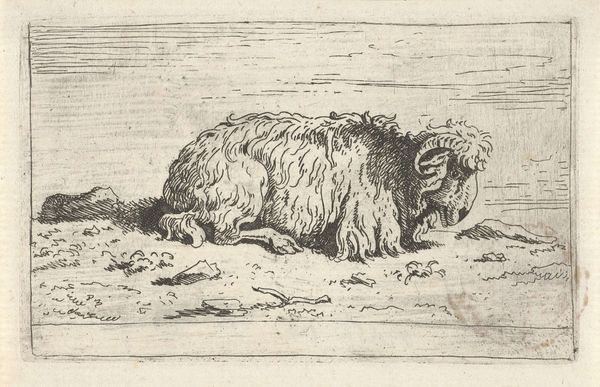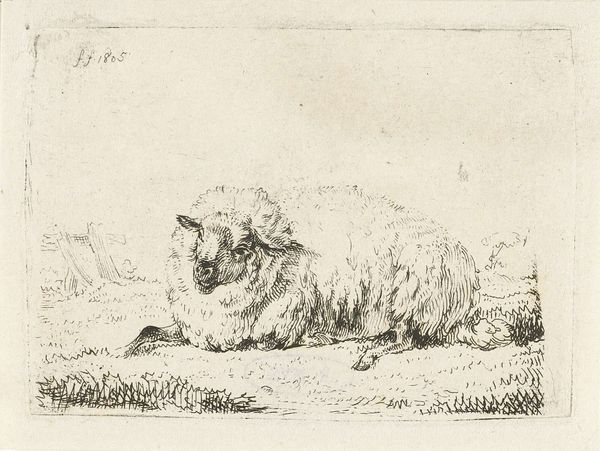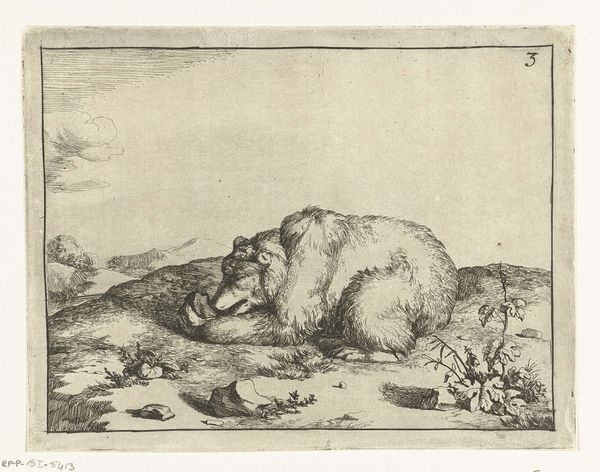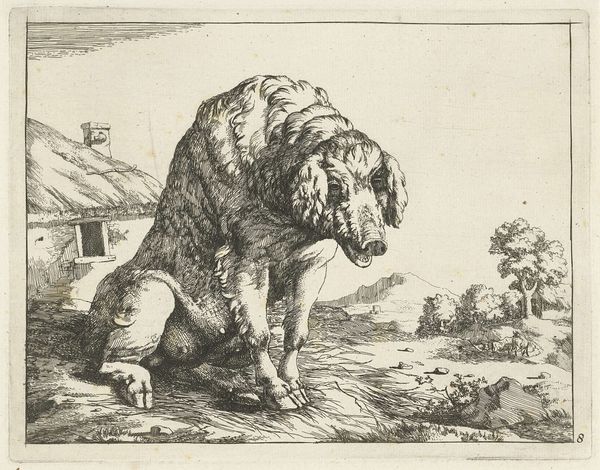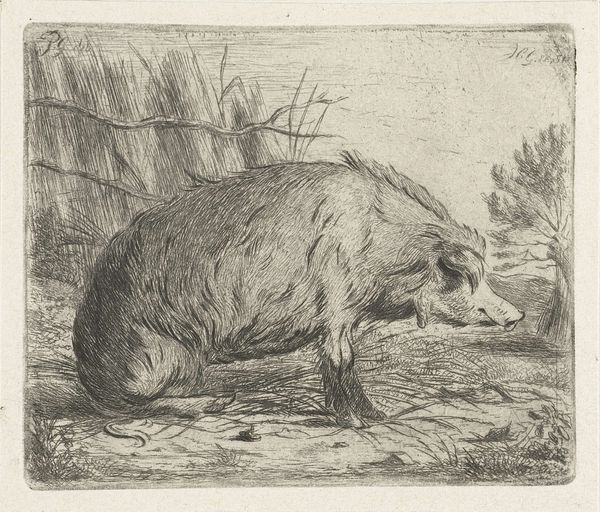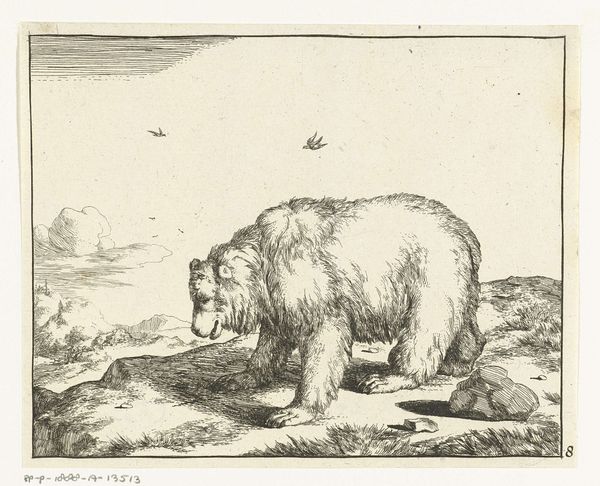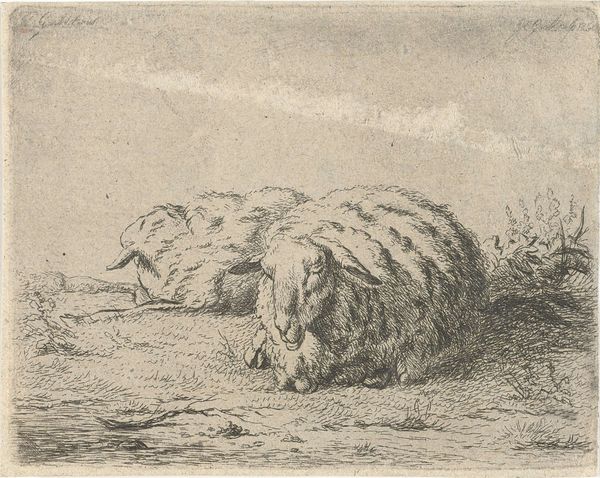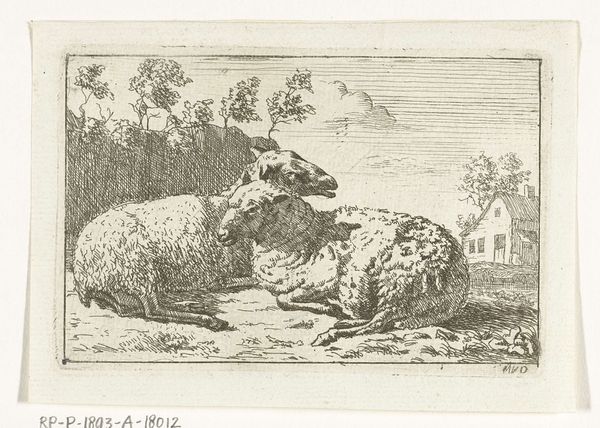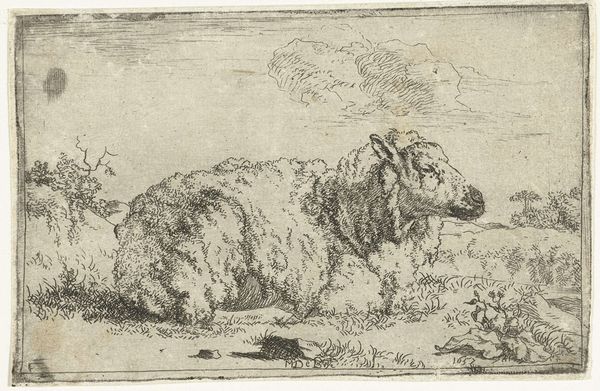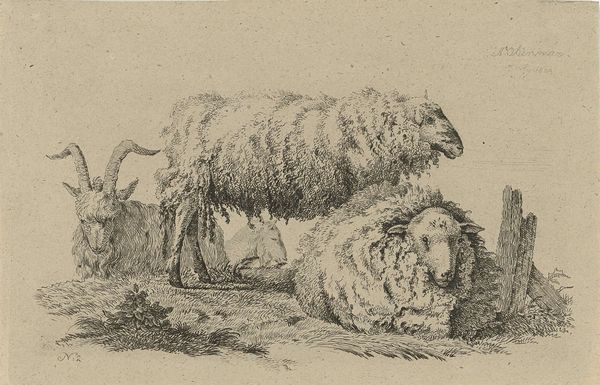
print, etching
#
animal
# print
#
etching
#
landscape
#
realism
Dimensions: height 82 mm, width 120 mm
Copyright: Rijks Museum: Open Domain
Frédéric Théodore Faber made this etching of a sheep in 1858. The work is simple, yet invites questions about the cultural and institutional history that underlies what might seem like a straightforward depiction. The Netherlands has a long history of sheep farming dating back to the Roman era and in the 19th century, sheep provided essential wool for the textile industry. One could ask how the image of sheep relates to a national identity rooted in land and agriculture. Consider how institutions, like the art market and the Rijksmuseum itself, shape what kind of art gets made and how it is presented. Was Faber commissioned to create such an image? Was it intended for a gallery or a private collection? What did the Dutch art world value at this time? To understand this work better, one might research 19th-century Dutch agricultural practices, the history of Dutch art institutions, and the role of landscape in shaping national identity.
Comments
No comments
Be the first to comment and join the conversation on the ultimate creative platform.
